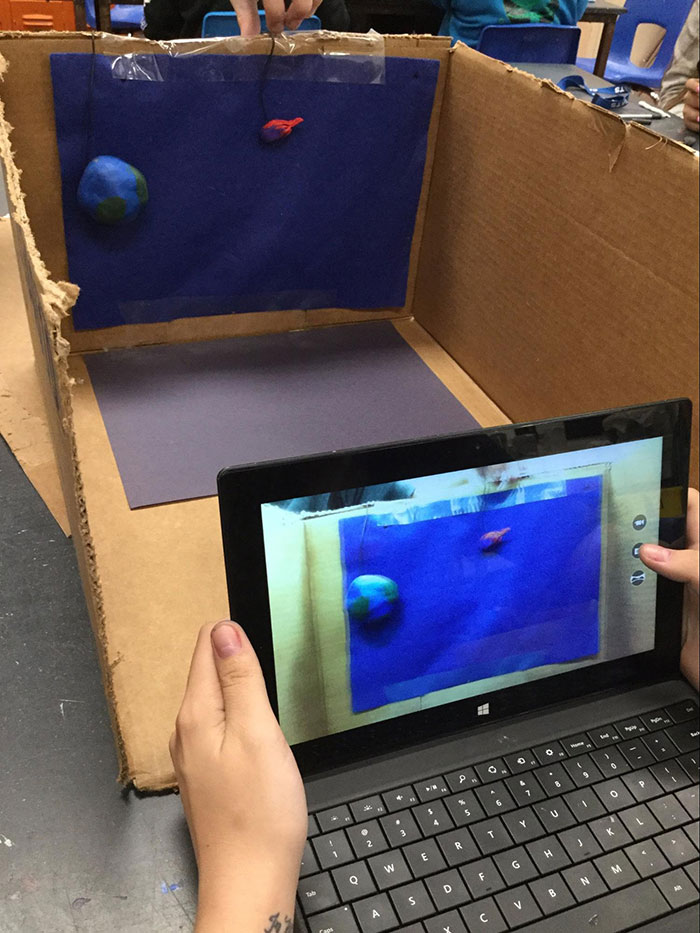 Should we be teaching students for assessments or for the world outside of school? With project-based learning, educators can do both.
Should we be teaching students for assessments or for the world outside of school? With project-based learning, educators can do both.
With the combined pressure on students to not only prepare and perform well on standardized tests but to also build on career success skills, schools explore many options to ensure that students flourish in all areas. Project-based learning (PBL) is a growing practice that focuses on both career preparedness and performing with an emphasis on Common Core State Standards through high-quality, rigorous, and engaging projects.
More than simply doing “a project,” Gold Standard PBL (the high standard set of criteria for project-based learning) involves the following design elements: a challenging problem or question, sustained inquiry, authenticity, student voice and choice, reflection, critique and revision, and public product. With all of these elements, students can build on their critical-thinking, analytical, problem-solving, and time-management skills, as well as be receptive to and utilize critical feedback, be open to possible failures, provide clear and convincing written and oral expression, and more.
How PBL works in my classroom
In my Art and Design classes (Pottery and Digital Media), projects are at the core of our curriculum. However, Gold Standard PBL takes those projects to the next level by providing high bars to reach.
Our last PBL in Pottery class involved using modeling clay, iPads, and found materials to create student-generated stop-motion films. Combining art, technology, ELA, and even sometimes engineering, students worked in teams to create elaborate stages out of cardboard, felt, paper, glue, or even sand and sticks. They developed a sequence of events, characters, and set ideas by sketching storyboards, made their moving characters from modeling clay, and used iPads to take hundreds of photos, or frames, of each tiny movement to be played back-to-back in a video.

To complete this project, students had to work together to solve problems, some unpredictable. How do they film a scene of a spaceship flying through air without a hand in the frame? Try fishing line. Some sets involved intricate puppeteering and unique innovation. Once the physical characters and sets were made, students created and edited their films on iPads, using a combination of stock and recorded audio to bring their films to life.
- Challenging Problem or Question – How can narratives be represented visually?
- Sustained Inquiry – Students researched images and read descriptions, including historical accounts, of the various prompt elements they were given. In order to represent their stories visually, teams had to research the answers to unique questions: What is a moonlit grove? What is a Speakeasy, and what does it look like?
- Authenticity – Each student on a team chose one of three “jobs” that best fit their skills and interests: Character Designer, Set Designer, or Film Designer. Together, we looked at behind-the-scenes views of how animators and film designers create final movies by each bringing their strengths to the team.
- Student Voice and Choice – While students were given four elements of a narrative to work with (character or creature, environment, situation, and object), they were free to create everything else as a team: the look of the characters and stage, the sequence of events, how their narrative elements were tied into their story, and any additional characters, environments, or objects.
- Reflection – At the end of our project, we responded to a few reflective questions in our journals: What was successful about your team’s claymation project? What was the most challenging part, and how did you overcome it? What would you do differently to improve your project?
- Critique and Revision – After students turned in their claymations to our Google Classroom assignment, all students had the opportunity to view and comment on every claymation in the class. I was also able to give my final thoughts and critique, then allow students to make edits and resubmit.
- Public Product – The final claymations were set to be played for a period of time (1-2 weeks) on a large TV in the front foyer, including during a parent-teacher conference day.

As an integral part of our classroom management strategy, Classcraft supports much of the same skills that PBL works to build, especially success skills that employers look for. These skills include self-monitoring behavior and habits, collaboration, and using technology as a tool.
By the time we start our PBL project, students already have an idea of how we use Classcraft and what kinds of behaviors and practices earn recognition: helping other students with a project, cleaning up after oneself, and working hard in class all earn XP, while slacking off and any behaviors that get in the way of success earn damage.
In this way, Classcraft sets students up very well for a PBL project and helps them to hone in on those 21st-century skills that will transform them from great students into great citizens.
Photo credit: Marissa Spratt
Personalized Learning


